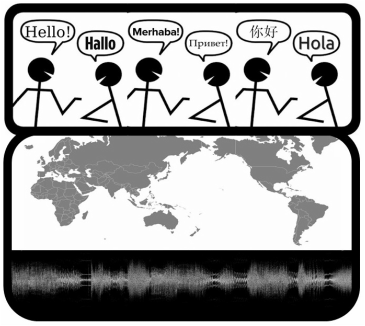“The quality of our thoughts is bordered on all sides by our facility with language.”
- J. Michael Straczynski, American screenwriter
My experiences studying and teaching language touch on a variety of disciplines including linguistics, second language acquisition (SLA), cognitive science, psychology, literature, philosophy of language, and media studies.
|
|
Given the importance of multicultural interactions in the 21st century, the cost of education in both time and money, and the impacts of foreign accent and language skills on our ability to access education, economic opportunities and social equity, it's crucial for us to better understand how language learning works and how we can improve on learners' ability to learn and teachers' ability to teach.
|
German in Today's WorldBy choosing to learn German, students gain the opportunity to experience the cultures and minds of about 120 million people who speak some variety of German natively, about 80 million who speak German as a second language, and even to discover the cultural heritage of 50 million people of German descent in America, where German was still the 2nd most-spoken language up until about 100 years ago, when it was the dominant language in many areas of the United States. According to Statistics Canada, 9.6% of Canadians claim German heritage today.
|
|
When we consider the shared cultural heritage of North America and the German-speaking world, learning more about German language and culture is a unique way to learn about our own.
|
|
I have been a member of the Language Creation Society since 2022.
|
Constructed LanguagesSince designing a course on constructed languages (conlangs), I have discovered the relevance of conlangs to a surprising variety of fields. Conlangs have been made to unite the nations of the world in peace and to conceal secret discussions for secret societies, to color fantasies of faraway utopian lands and to underscore the injustice of displacing extraterrestrial indigenous peoples, to promote equality for women and to discover the secret will of the divine, to discover the original language of Eden and to transcend the limits of human tongues by grafting them with formal logic.
|
|
|
Centuries ago and in today's film industry, conlangs manage to capture the interest of people reaching for something they can't find in natural languages.
|
Language Standardization, Literacy, and Language EducationIn addition to my research and teaching focuses, I am increasingly interested in the history of how languages become standardized, the impacts of literacy on various cultures (positive and negative), and the external factors that influence the field of language education (e.g., politics, funding, cultural attitudes about foreign languages and language purity).
|





